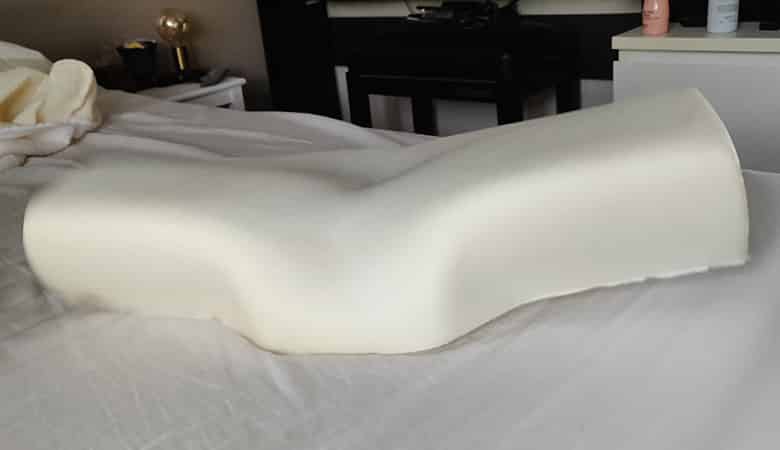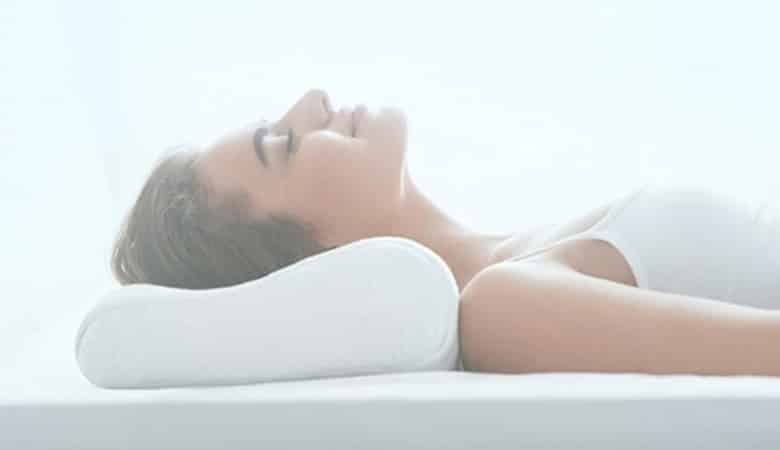This post is part of the complete memory foam pillow buyers guide
Considering we spend at least a third of our lives asleep, we need a comfortable bed to crawl after a long day. However, when it comes to what we sleep on, most people put much attention on the mattress, while overlooking the pillow.
With the pillow industry producing good pillows suited to the way we sleep, such as the memory foam pillow, people are starting to put much thought on their head cushioning, giving rise to the query of whether it’s okay to put a pillowcase on them.
So. Should you put a pillowcase on your memory foam pillow? Yes, We recommend using a pillowcase on your memory foam pillow because there are many advantages of using a pillowcase on your memory foam pillow, such as
- Makes it much easier to wash
- Can regulate temperature better
- Naturally hypoallergenic, great if you are sensitive to certain fabrics
- Additional comfort
Why using a pillowcase on your memory foam pillow is an advantage
Pillow covers are touted for having significant benefits apart from acting as a decorative covering. Here is why you should cover your memory foam pillow.
- Easy to wash
Cleaning memory foam increases the likelihood of destroying the foam. Covering it with a pillowcase keeps it cleaner, avoiding the chances of having to wash the pillow. Since pillow covers are easy to remove and clean, they give you maximum convenience when it comes to keeping your memory foam pillow clean.
- Can regulate temperature
Some pillowcases are designed to regulate temperature at night. Since memory foam is prone to retaining body heat, a pillow cover can be a way to keep you sweat-free and cool all night long.
- Naturally hypoallergenic
If you suffer from allergies related to your pillow, adding a pillow protector can prevent irritants and allergens from coming into contact with your body. Because memory foam pillow is also hypoallergenic, covering it with a pillowcase will provide better results.
- Additional comfort
Pillowcases provides a smooth and silky surface for extra comfy nights. A set of soft pillow covers will give your head a perfect resting place to enjoy your memory foam pillow’s maximum benefits.
Why not using a pillowcase is still okay

Some individuals prefer not to cover their memory foam pillow, and it is still okay. Memory foam pillows come with their own pillowcases; therefore, adding another cover might inhibit proper breathability since memory foam tend to retain body heat.
Choosing the wrong pillowcase may compromise the good side of a memory foam pillow such as hypoallergenic features. For instance, you can purchase a pillow cover that attracts dust and allergens’ growth, making you allergic to it.
Also, acquiring one of the high-quality pillowcases might cost you additional dollars, when you can get the most out of the memory foam pillow without covering it. The pillowcases require extra time to maintain them from having to clean them weekly to change them frequently. To save yourself all this hustle, you can still use your memory foam pillow without the case.
Whether you should put a pillowcase on your memory foam pillow comes down to personal preferences. If the memory foam pillow is easily washable, softer, cozy, and more relaxed on your head without a pillowcase, then go for it. If it doesn’t, you will need to find yourself one of the best pillowcases in the market. Regardless, all you need to achieve is good nights, followed by fresh mornings.
What is a memory foam pillow?
As far as pillows are concerned, memory foam is the trending and most recent innovation. Before we go on in this article, its important to make sure everyone is well-acquainted with a memory foam pillow. Memory foam is manufactured from polyurethane, a type of plastic that you will find in many products such as sofas, mattresses, and insulations.
They are super comfortable due to the fact they change their shape under pressure and heat making them easy to adjust to individual shape and sleeping method, giving you extra head and neck support. After waking up, the pillow returns to its original condition when pressure is gone.
Characteristics of Memory foam pillow

Consider these characteristics that make the memory foam pillow to stand out from traditional pillows.
- Retains Contours
The main benefit and the selling point of memory foam pillows are maintaining excellent contour to your head, neck, spine, and shoulders. When pressure is applied to the memory foam, it molds to your head, helping you keep the spine aligned to the rest of the body. It doesn’t matter whether you sleep on your back, belly, or sides; the pillow distributes weight evenly, relieving pressure on your neck and back. As a result, you will get better night sleep and enough rest.
- Material Breathability
In addition to responding to body pressure, memory foam pillows also use heat to contour. This makes most of the cushions retain body heat, which can be very uncomfortable in summer and hot weather, leaving you feeling quite sweaty. Fortunately, newer memory foam pillows are equipped with air chambers to allow the material’s excellent breathability. This is essential for promoting airflow to keep the pad cool while sleeping. If you get warm at night, you’ll have to choose open-cell of gel-infused memory foam pillows, which are both designed to keep you cooler.
- Relieves pain
For people suffering from back and neck pains, a memory foam pillow can help relieve the problem while you sleep. Unlike traditional pads that wear out over time, leaving pressure points that can cause discomfort, Memory foam cushions your body minimizing the impact of pressure points.
- Energy Absorbent
If you have ever shared a pillow with a restless sleeper, you can testify it’s a real struggle. Luckily, memory foam pillows absorb energy and motion and prevent it from transferring to the next person. So, the turning and tossing of your partner will have little or no impact on your sleep. Memory foam also doesn’t squeak, creating stability, eliminating motion transfer, and giving you good neck and spine alignment.
- Hypoallergenic
Another characteristic of memory foam is that it is excellent for sleepers with allergies. Due to their hypoallergenic nature and dense structure, they are excellent at minimizing dust, mold, and other allergens that can build up. If you are allergic to traditional feather pillows, memory foam might be your perfect choice for giving you the good night sleep that you desire.
Memory Foam Pillows: A complete buyers guide – Parts:
1. Why Should You Use A Memory Foam Pillow? The Pros & Cons
2. Are Memory Foam Pillows Better Than Regular Pillows?
3. Are Memory Foam Pillows Safe? Is The Smell Toxic or Not?
4. How Often Should You Replace Memory Foam Pillows?
5. How to Clean a Memory Foam Pillow: Step by Step Guide
6. Can Memory Foam Pillows Grow Mold? And How to Avoid it!
7. How to Dry a Memory Foam Pillow: Step by Step Guide
8. Should You Put a Pillowcase on Your Memory Foam Pillow?
9. Why Are Memory Foam Pillows so Hard? How to Soften Them!
10. Best Memory Foam Pillows of 2021 – Full Guide and Review
